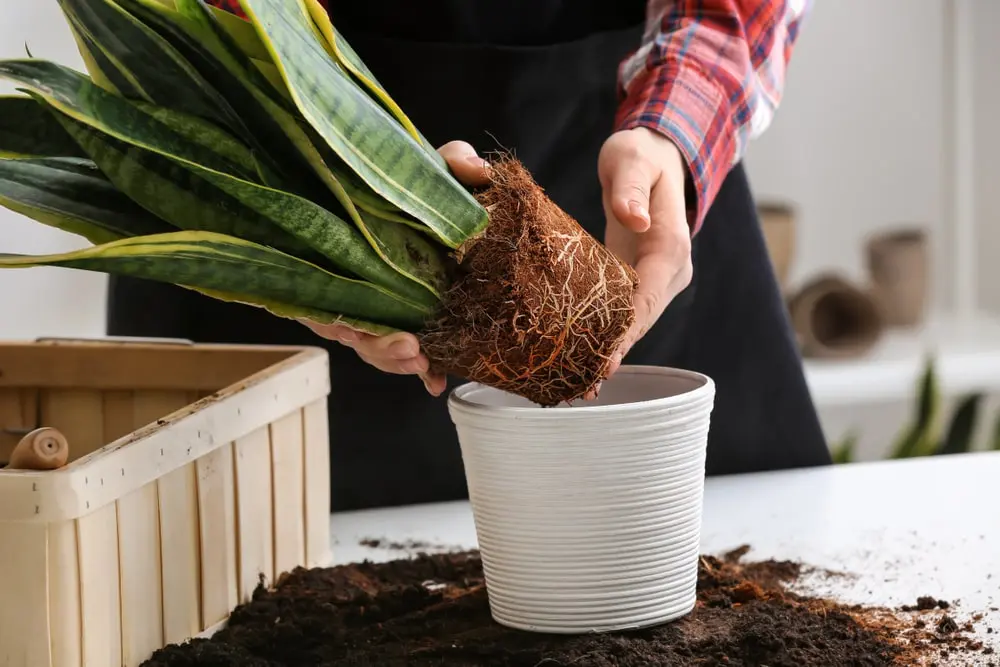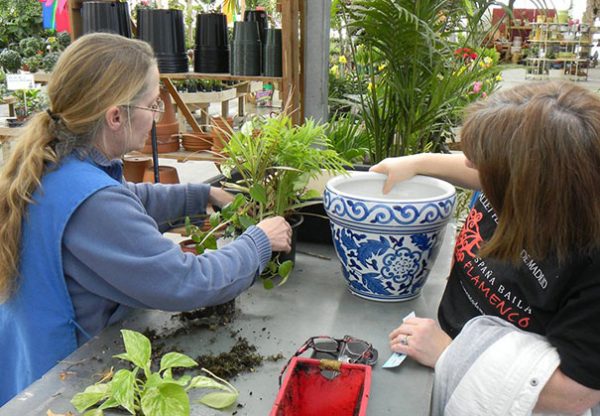
Winter is a great time to repot houseplants.
Plants like to be potted up into larger pots as they grow. Larger containers allow for more soil to nourish the root systems. Plants that have grown in pots for years can become root bound, which can lead to a plants’ demise. Repotting houseplants in the winter gives the avid gardener a chance to keep their thumbs green instead of frostbit!
A sign that your plant needs repotting is if you see roots on the surface of your pots. Another sign is roots growing out of the drainage holes at the bottom of your containers. Slow growth can also be a sign that your plants have become root-bound. Check to see if the roots are coiling around the outside of its pot. If they are spiraling around the rootball, it is time to re-pot your plant.
Many indoor plants prefer repotting before the new growing season, which is another reason to do it now before the spring season. Meadows Farms and the Great Big Greenhouse stock pottery from around the globe. We receive early shipments in the winter, so the selection is at its peak.
When choosing a pot, make sure it is complementary to the décor in your home, and the size is appropriate for your plant. Do not oversize pots when repotting. A good rule of thumb is to increase the size of the existing container by two inches. If the new pot is too big, it can hold extra water and cause rotting of the roots. Make sure the containers have drainage holes to allow water to flow through the soil. To protect your carpet or hardwood floors, select a saucer that compliments the new pot.
Use a premium potting soil mix enhanced with fertilizer as the planting medium. Espoma Organic’s line of potting soils are excellent products for most indoor plants.
Use the following tips to make repotting easy:
- Remove the plant from the existing pot. You may have to slide a knife or trowel along the side to loosen the plant.
- If the roots are coiled, pull them apart or prune them if they are extremely root bound.
- Add soil to the bottom of the new pot, center the plant, and add premium potting soil around to fill the container.
- Water thoroughly to moisten the roots and settle the soil.
It is not unusual for the plant to go into shock after repotting. Try to keep the plant out of direct sunlight for a few weeks and keep the soil evenly moist while the plant recovers.


